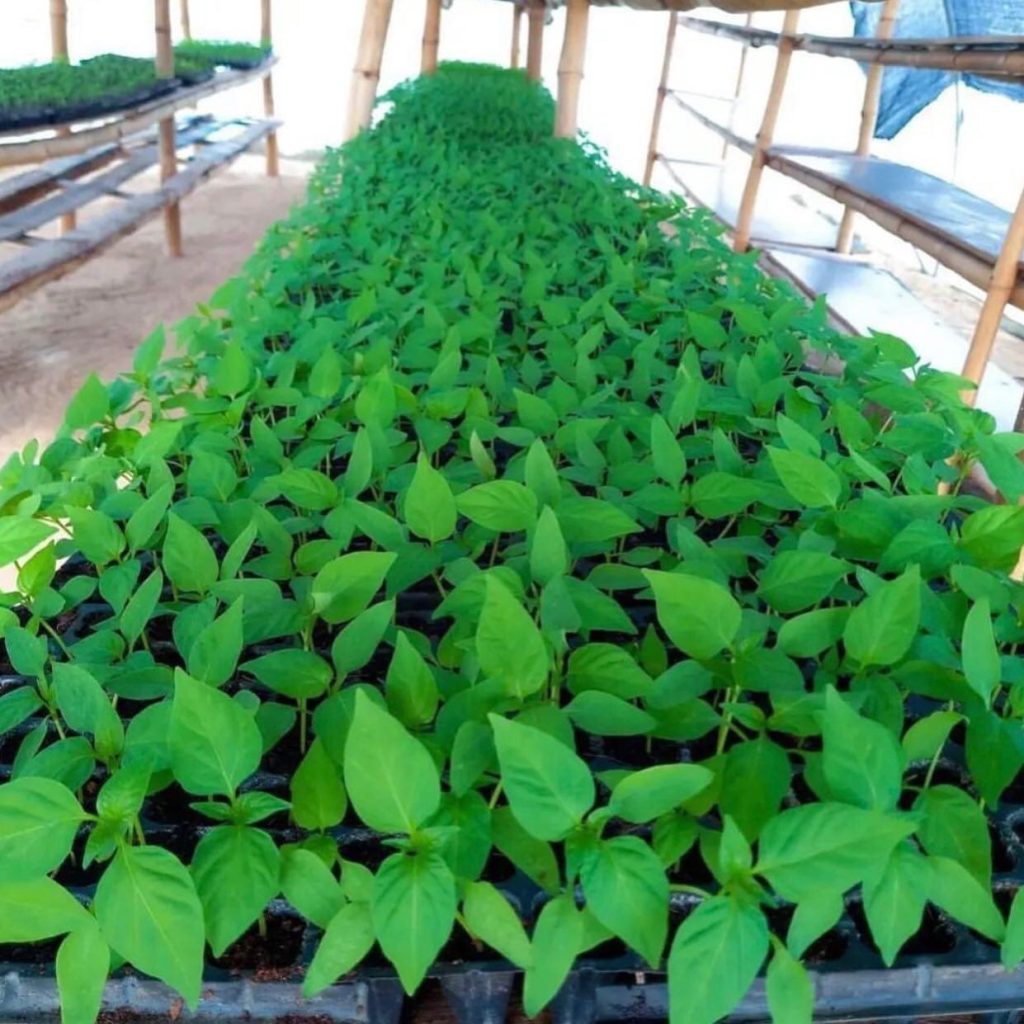Bell peppers, with their vibrant colors and versatile culinary uses, are a staple in many households. If you’re looking to grow your own bell peppers, starting in a greenhouse nursery can provide the ideal conditions for successful cultivation. In this guide, we’ll walk you through the stages of bell pepper growth and how to nurture these plants for a bountiful harvest.
The Greenhouse Nursery Advantage

Bell pepper seedlings thrive in warm soil conditions, making a greenhouse nursery an excellent starting point. Here, the soil temperatures are optimal, allowing for quicker germination. Typically, bell pepper seedlings will emerge within a window of 7 to 10 days after seeding.
Vegetative Growth: Weeks 1-4
After about twenty-one days, the bell pepper plants are ready to be transplanted into the greenhouse. This marks the beginning of the vegetative growth stage, which lasts for approximately four weeks. During this period, the focus is on building a robust plant structure with healthy leaves and stems.
The Fruiting Stage: Blossoms and Pollination
Following the vegetative growth stage, the bell pepper plants enter the fruiting stage. At this point, you’ll notice the emergence of delicate white or yellow blossoms. These blossoms come in star or bell shapes and tend to bloom in clusters of two or three, adding a touch of natural beauty to your greenhouse.
Self-Pollination: A Unique Feature
Bell pepper plants possess a remarkable ability—they can self-pollinate. This means that they don’t rely on external factors like wind or insects for pollination. The flowers of the bell pepper plants have a mechanism that facilitates self-pollination. Pollen is released directly from the anthers onto the stigma, ensuring successful fertilization.
From Blossom to Pepper
Once pollination occurs, the transformation begins. The fertilized flower’s ovary begins to develop into a fleshy pericarp. This pericarp eventually encloses two or more locular chambers, forming what we know as the bell pepper. The locular cavities within the pepper are the hollow regions where the seeds will take shape.
Maturation and Color Transformation
Bell peppers undergo a fascinating color transformation as they mature. Initially, they are green, owing to the presence of chlorophyll. As the peppers ripen, the chlorophyll breaks down, leading to a change in color. Depending on the variety, bell peppers can mature into shades of yellow, red, orange, purple, or even exhibit variegated patterns.
Conclusion
Cultivating bell peppers in a greenhouse nursery allows you to control and optimize the growth conditions, resulting in healthier plants and a more abundant harvest. From the early days of germination to the vibrant hues of mature peppers, understanding the stages of bell pepper growth empowers you to nurture these plants successfully and enjoy the fruits of your labor in the kitchen. Whether you prefer the sweetness of red or the crispness of green, growing bell peppers in a greenhouse can be a rewarding and colorful journey.